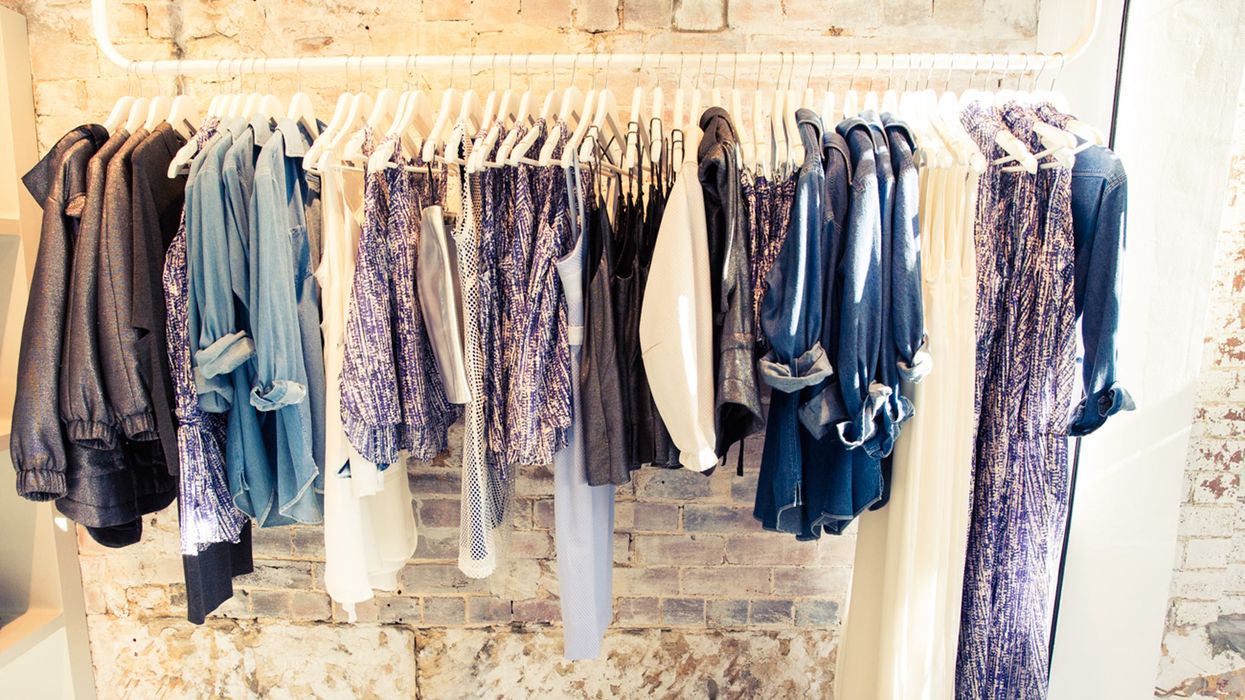A Newbie's Overview to Navigating the Boutique Fashion Scene
A Newbie's Overview to Navigating the Boutique Fashion Scene
Blog Article
Discovering the Evolution and Influence of Apparel on Modern Fashion Trends
The advancement of clothing has actually dramatically influenced modern-day fashion trends, combining historical precedents with sophisticated advancements. Legendary numbers like Coco Chanel and Yves Saint Laurent revolutionized the style market by presenting ideas that focus on comfort and ease of access, which proceed to reverberate today.
Historical Fashion Influencers
In the tapestry of fashion background, particular figures have left an enduring mark, forming the patterns and styles that define whole eras. Coco Chanel, a cutting edge developer, redefined females's fashion by presenting comfy, sophisticated clothes that departed from restrictive bodices. Her iconic Chanel suit and little black gown have actually come to be ageless staples in closets worldwide. Christian Dior's post-war "New Look" in 1947, with its celebration of feminineness through complete skirts and cinched midsections, noted a return to luxury and has actually continued to influence designers.
Elsa Schiaparelli is one more critical number, renowned for her avant-garde designs that incorporated surrealist art, collaborating with Salvador Dalí to create whimsical pieces that challenged traditional looks. Her ingenious use color and bold patterns reverberates in contemporary style. Yves Saint Laurent, at the same time, equalized haute couture with prêt-à-porter collections, bringing path styles to the masses and setting a criterion for contemporary ready-to-wear lines.
These enthusiasts, among others, not only reinvented fashion in their times however also established sustaining fads that resonate in today's fashion business, supplying a foundation whereupon modern developers proceed to introduce and construct. Their traditions highlight the importance of creativity and bold in vogue's ever-evolving story.
Technological Developments in Style
Among the dynamic landscape of the apparel industry, technological improvements stand at the center of technology, improving exactly how developers develop and consumers engage with style. The integration of 3D printing has actually revolutionized style processes, enabling developers to trying out intricate structures and sustainable products that were previously impossible. This innovation assists in fast prototyping, reducing waste and expediting manufacturing times.

Smart textiles, embedding innovation into fabrics, are likewise transforming the industry. Advancements like temperature-regulating and self-cleaning fabrics supply boosted functionality and comfort. Wearable innovation, including functions like physical fitness monitoring and communication, adds a new measurement to style, merging visual appeals with practicality.
Social Shifts and Style
As technical innovations remain to improve the fashion market, cultural changes are equally prominent, redefining design and customer choices. In current years, the surge of social networks platforms has sped up the dissemination of worldwide fashion trends, enabling varied social impacts to assemble and coexist. This electronic interconnectivity has helped with the rapid exchange of ideas, causing a more inclusive and diverse analysis of style that reflects the complex nature of modern-day culture.
Social awareness and why not find out more admiration have actually motivated developers to attract motivation from a more comprehensive spectrum of ethnic and historic contexts, incorporating standard themes with modern aesthetics. This combination has led to style that reverberates with a larger audience, advertising a sense of identity and belonging across various demographics. Furthermore, the increasing need for personalization has driven brands to offer adjustable alternatives, enabling customers to reveal uniqueness while showing their social heritage.
Moreover, shifting social values have actually influenced style, with inclusivity and variety becoming central themes. The industry has actually started to accept models and influencers of various physique, ethnic cultures, and gender identifications, difficult conventional appeal criteria. This improvement underscores the power of social shifts in forming the future of style, as design comes to be a more genuine expression of individual and cumulative identification.
Sustainability and Modern Design
While the fashion industry proceeds to evolve, the crucial for sustainability has come to be increasingly urgent, influencing contemporary style practices. The surge of slow-moving style, which highlights top quality over quantity, motivates consumers to spend in ageless items rather than transient fads.
Furthermore, contemporary layout is identified by its development in lessening waste and advertising circularity. This approach not just reduces ecological effect however also improves the social duty of fashion houses.

Future Trends in Fashion

Sustainability will remain to be a driving pressure in forming future style trends. The industry is increasingly taking on environmentally friendly products and honest manufacturing techniques, reacting to an expanding customer demand for accountable practices. Developments such as bio-fabricated materials and closed-loop recycling systems are established to redefine how garments is produced and eaten, reducing environmental impact while keeping design and top quality.
Cultural shifts, consisting of the increase of inclusivity and diversity, will certainly likewise play an essential role. As culture comes to be a lot more familiar with social problems, style is expected to become a system for expression and adjustment. Developers will likely focus on developing image source collections that reflect a wider variety of identities and experiences, championing depiction and access.
Conclusion
The development of clothes significantly influences modern style patterns, basics where historic impacts combine with modern layouts. This recurring evolution highlights style's role as a mirror to social values and technological innovation, suggesting a future rich with development and inclusivity.
The advancement of clothes has considerably affected modern style fads, merging historical precedents with innovative developments.Amidst the dynamic landscape of the fashion sector, technical advancements stand at the forefront of advancement, reshaping how designers develop and customers engage with style.While the fashion sector continues to develop, the crucial for sustainability has ended up being progressively immediate, affecting modern-day design practices. As sustainability comes to be ingrained in modern-day design, it leads the way for an extra accountable and mindful style market.
The advancement of apparel significantly influences modern-day style patterns, where historic impacts combine with modern designs.
Report this page